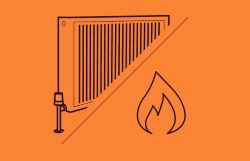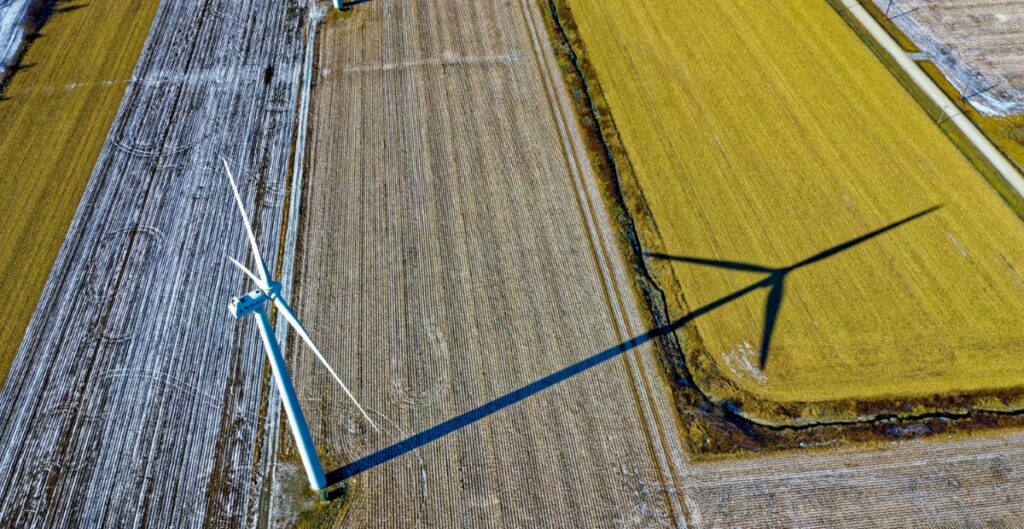If you are trying to lower your impact on the environment, you should consider switching to a green tariff where energy is sourced from renewable sources. Nowadays, practically all UK suppliers offer green tariffs so businesses do not have to worry about having troubles finding a sustainable contract.
Here we take a look at the main types of green energy and we explain how small businesses in the UK can get green contracts.
What are the major types of green energy?
In green energy contracts, energy can be coming from different renewable sources. The main ones are:
- Wind
When energy is sourced from the wind, large wind turbines rotate blades mounted at tall heights which can be either on land or in the sea. By doing so, they capture the kinetic energy that winds create.
The rotor is connected to a turbine generator that spins and converts the wind’s kinetic energy into electricity. Therefore, the terms wind energy and wind power are used to describe the process during which the wind is used to generate electricity.
- Solar
Solar technologies such as photovoltaic (PV) solar panels capture light or electromagnetic radiation from the sun and then convert it into electricity that can be used by consumers. By installing solar panels on their homes, energy consumers can generate their own energy and can, therefore, reduce their vulnerability to changes to global energy prices.
In simple terms, solar power works by converting energy from the sun into power. Energy generated from the sun can be used for both electricity and heat. Regardless of the form, both are generated through the use of solar panels.
Solar panels can range in size and it does not necessarily have to be sunny for them to work.
- Geothermal
Geothermal energy comes from heat that is produced in the Earth’s core. It is sourced from reservoirs of hot water located a few miles or more below the earth’s surface.
Geothermal plants usually use wells to pump hot water from geothermal resources. This water is then converted into steam which rotates a turbine that activates a generator. As a result, electricity is produced.
What makes geothermal energy renewable is the fact that extracted water and steam can then be reinjected and the process can be repeated multiple times.
- Hydropower
Hydropower plants work in a way similar to those of wind turbines as they channel the kinetic energy from flowing water into electricity through the use of a turbine generator.
Hydro plants are usually placed near large bodies of water and they use structures such as dams to alter the flow of water. The greater the water volumes and the higher the heads of the flowing water, the more energy and electricity is produced.
- Biomass
Biomass refers to organic material such as wood, dry leaves, or agricultural waste. To generate energy, biomass is burned in a boiler. This produces high-pressure steam, which rotates a turbine generator. In turn, electricity is produced.
Biomass can be regrown or replenished and humans and animals will always produce it. This is what makes biomass renewable.
For transportation, biomass can be converted into liquid or gaseous fuels.
How to get renewable energy for business
If you want your business to be getting energy from renewable sources, you can either switch to a green tariff where a supplier gets green energy for you, or you can generate your own renewable energy.
However, to be able to generate your own renewable energy, you typically have to invest money in technologies allowing you to do that. Depending on the source of energy, these technologies and the costs of getting them are:
- Wind power – from £10,000 for microturbines (2.5-6kW) to as much as £3.3 million for large turbines
- Solar panels – between £5,000 and £10,000 for small systems
- Biomass systems – costs vary depending on the size of the boiler and the type of fuel
- Geothermal and ground source heat pumps – between £11,000 and £15,000
- Hydroelectric power – between £4,000 and £8,000 per kW of capacity installed
It is important to note that although you have to invest money upfront, all of these technologies will pay back after a few years.
Businesses that want to switch to a green energy tariff can browse what contracts UK suppliers offer and can choose one that matches their energy needs best. There are plenty of options and it is a good idea to use an energy comparison website that compares hundreds of available energy tariffs and presents consumers with the best results.
And, if you want to make sure that the deal you are getting is the most competitive one on the market, you should hire an energy broker. They can analyse your energy needs and goals and help you find a green contract that matches them. Brokers work closely with suppliers so they can help you find deals that you would not find yourself. Thanks to their help, you can be sure that the contract you are signing is the cheapest and the greenest on the market.
What benefits can my business get from renewable energy?
The most obvious benefit from using renewable energy is the fact that businesses can reduce their carbon emissions and their impact on the environment. The advantages do not end there, however. Additional benefits of renewable energy for businesses include:
- Lower energy bills
- Stable energy costs are renewable sources are not affected by price increases
- Possibility of making an income from selling electricity back to the grind
- Easier energy management
- Ability to meet carbon reduction targets
- Better business reputation
- Exemption from the Climate Change Levy (CCL) which is a governmental tax introduced to encourage companies to be more energy efficient
- Possibility of accessing energy subsidies
These benefits show that renewable energy is great for businesses. By using it, your business can become energy independent. Thanks to that you will not be affected by changes to wholesale energy prices. The ongoing energy crisis in the UK and energy prices reaching record highs shows how important this is. And, as the whole world is feeling the negative impacts of climate change, reducing your carbon emissions shows your commitment to caring about the Planet.




